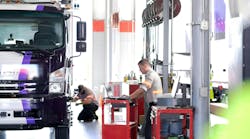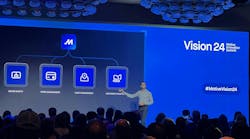To take care of New York City's 29,000 acres of parks, playgrounds, ball fields, beaches, natural areas and street trees, the Dept. of Parks & Recreation owns and maintains a fleet of some 2,700 vehicles, including 45 different types of equipment. It would be hard to find a more diverse operation and it would be harder still to find one more committed to “going green.”
“This is the largest municipal parks department in the country,” says Keith T. Kerman, chief of operations. “We have an expense budget of over $400 million for parks, more than many entire municipalities, and we maintain 29,000 acres.
“We have vehicles for snow removal and beach cleaning. We also have a forestry fleet with bucket trucks, log loaders and chippers; a construction fleet with dump trucks and backhoes; a garbage fleet with six-yard and sixteen-yard packers; and a special events fleet,” Kerman continues. “Then there are buses and trolleys; crew vehicles and pick-up trucks; passenger vans for our work crews and cargo vans for our mechanics, plumbers and electricians; plus sedans and SUVs and some 275 electric carts that were donated to us by DaimlerChrysler four years ago.”
This fleet would be an amazing operation even if all the vehicles ran on conventional fuel, but they don't. In fact, most use some kind of cleaner, alternative power, from biodiesel to compressed natural gas (CNG) or electricity. There are even two solar-powered utility vehicles, recently donated by BP America.
“Parks is actively involved in Mayor Bloomberg's ‘PlaNYC’ to clean the city's air,” says Kerman. “For example, all 808 pieces of diesel equipment of every age, type and size are using B-20 comprised of 80% ultra-low-sulfur diesel plus 20% soybean-based biodiesel. Truth is, they have been for the past year and a half. As a practical matter, we made the switch to biodiesel seamlessly and without issue.
“The only thing we do is switch to B-5 during the winter,” he adds. “Next summer, we are also going to pilot a B-50 project.
“City Parks was also an early test user of CNG,” says Kerman. “On the light-duty side, we just opened two new compressed natural gas fueling facilities. We have about 30 CNG-powered vehicles now and we plan to buy 60 more.
“In addition to CNG, we also have close to 200 hybrids in the fleet, including the Toyota Prius, Ford Escape and Honda Civic hybrid,” he continues. “Eventually, we will replace all our conventional sedans with hybrids or CNG-powered vehicles. We would also like to find alternative-powered pickup trucks and cargo vans, as well as cleaner and quieter options for our 3,000 to 4,000 two-cycle power tools, like our lawn mowers.”
Kerman says that he and his team will “research anything” when it comes to looking for cleaner solutions. As proof positive, they've hosted a fleet show every May for the past 19 years on New York's Randall's Island. Last year, more than 130 vendors participated, displaying light- and heavy-duty vehicles, including clean and alternative fuel technologies.
Kerman has some advice for any fleet interested in creating a greener operation. “It may not sound as glamorous as hybrids and other advanced technology solutions,” he notes, “but there are two things anybody can do to help clean up the air and save fuel: buy new vehicles to get the old ones off the road, and buy smaller vehicles whenever possible.”


